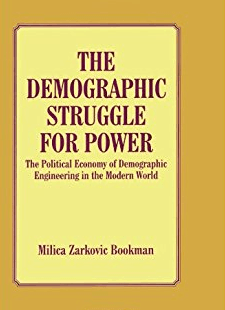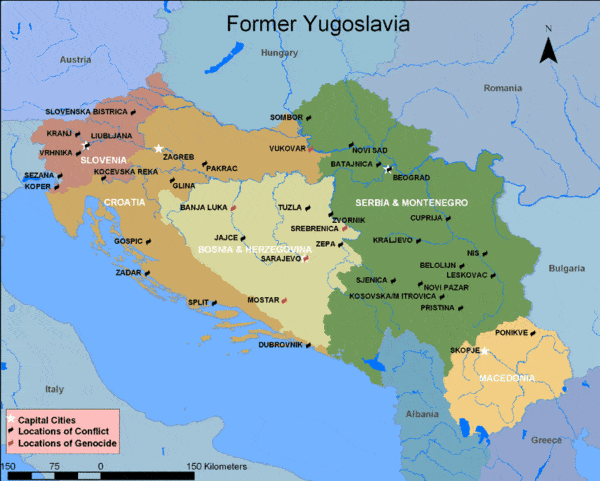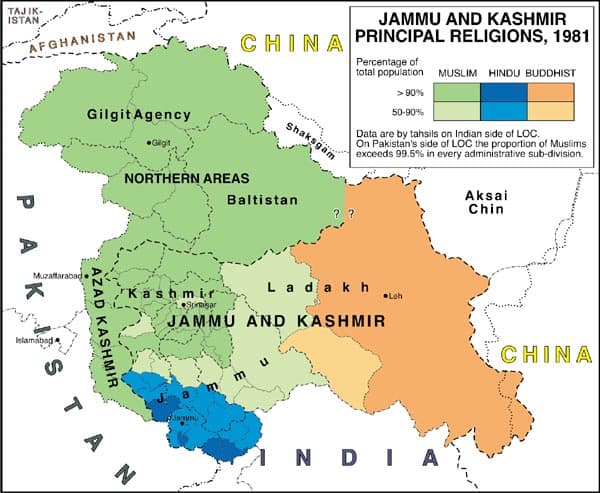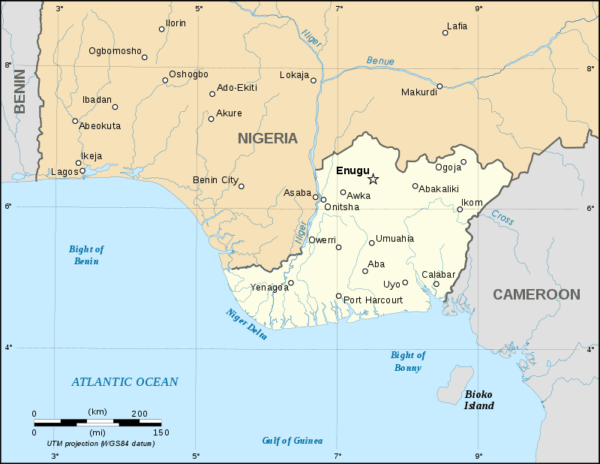Blood and Soil
Thomas Jackson, American Renaissance, December 1997
The Demographic Struggle for Power: The Political Economy of Demographic Engineering in the Modern World, Milica Zarkovic Bookman, Frank Cass & Co. Ltd., 1997, 273 pp.
The Demographic Struggle for Power is one of the most straightforward and factual accounts now available of how ethnic animosity creates conflict and violence. In a study that focuses on the Balkans but covers all parts of the world, Prof. Bookman takes for granted a central fact of human nature that multi-racial dreamers ignore: Ethnic identity and the desire to preserve it are among the most powerful forces on earth. Perhaps because she is a Slav, Prof. Bookman does not find it necessary to account for group consciousness or to apologize for it. Her purpose is merely to catalogue the policies to which it gives rise.

Prof. Bookman assumes that whenever ethnic groups — or races or nationalities or language groups or any other self-identified tribes — live in the same territory there will be competition. Its usual form is to try to increase the numbers of one’s own group at the expense of others with the eventual goal, stated or not, of displacing them and taking their territory. Each member of one’s ethnic group is a natural ally, and greater numbers mean political, economic, and military power. Demography is destiny, which explains the title of the book.
Virtually every group understands this and acts accordingly — sometimes violently. “The war of numbers may precede, accompany or follow the war of militias,” writes Prof. Bookman. Indeed, she quotes a United Nations study to the effect that between 1989 and 1992 there were 82 separate wars (defined as organized violence that caused at least 1,000 deaths). Of these 82, 79 — or 96 percent — “took place within borders and among different ethnic or religious groups.”
Most of The Demographic Struggle for Power is devoted to descriptions of the different ways governments and ethnic groups engage in what Professor Bookman calls “demographic engineering,” and the great strength of this book is the number of examples it presents from around the world. Ethnic competition is clearly universal.
The first step in demographic engineering is simply to count people, but this can be politically explosive: “Decennial census enumerations have always caused inter-ethnic turmoil as the relative strength of ethnic groups is revealed.” As Prof. Bookman explains, “the census is like an election that ethnic groups attempt to win in order to justify their economic and political power.” Likewise, when there is universal suffrage, elections themselves become ethnic head-counts.
When the census includes figures on minorities there is pressure to rig the results. In Burma, for example, the military sometimes chases undesirable tribes out of an area before census-takers come through. In both Macedonia and Kosovo, Albanians have boycotted the census so they could later claim they were undercounted. Since 1961, Pakistan has stopped asking questions about ethnicity because the figures are so inflammatory. Saudi Arabia and Mauritania do not release census data, presumably because the ruling nationalities are embarrassingly small.
One way to keep the number of undesirables down is simply not to count them separately. In Turkey, Kurds officially do not exist (and can be arrested for using their language in public or singing Kurdish songs). Likewise, since Bulgarians don’t like Macedonians in their country, they do not recognize them with a census category.
For years, Yugoslavia tried to get its citizens to identify themselves as Yugoslavs, and the number of people who checked that category peaked in 1981. Ten years later, as the nation began to break apart, Yugoslavs once more became Serbs, Croats, Albanians, etc.

The Nigerian census of 1962-63 is now seen as one of the causes of the Biafran war. The 1962 count showed that northern tribes had lost their majority. The results were disputed and there was a recount, which was also disputed. It was in this inflamed atmosphere that Biafra declared independence in 1967, starting a war that lasted until the new nation was finally crushed in 1970.
Although Prof. Bookman does not mention the United States in this context, non-whites understand the importance of the census. Hispanics insist that illegal aliens be counted along with citizens, and blacks bitterly oppose a “multi-racial” category that might reduce their numbers.
Of course, nationalists understand that the best way to get satisfactory census figures is to have a growing population. European governments have paid child allowances for generations. Jews all around the world urge each other to have more children. Soviet women who had six children or more became Heroines of the Soviet Union. Communist Romania banned birth control and made abortions difficult for everyone but Gypsies. Communist Poland cut back on day care in the hope that women would stay home and rear more children. Newly-independent Croatia is doing the same thing; it promotes “the mother as educator of children” rather than worker.
Nationalist policies are often directly competitive. One Serbian leader, Zeljko Raznjatovic (better known as Arkan), urged Serbian women to have at least four children to offset Albanians, “who reproduce like rabbits.”
Ethnic groups often cast an uneasy eye on others with a faster rate of growth. Jews in Israel fear Arabs, and South African whites fear blacks. Indian Hindus fear that Muslims are outbreeding them and have demanded a change in laws that permit Islamic polygamy. The (Indira and Sanjay) Gandhi policy of sterilization was ostensibly for all Indians but Muslims felt it was directed against them and rioted.

Non-whites routinely suspect whites of doing to them what they might do if they had the power. In South America, peasants have thought measles injections from the United States were sterilization drugs. Filipinos have believed the same thing of tetanus shots given by Americans.
Assimilation is another way to increase the numbers of one’s own group. As Prof. Bookman writes, “the educational system is one of the most effective methods of assimilation insofar as it reaches individuals at an early age and can control their minds over an extended period of time.” This is why language of instruction and school curriculum are so hotly contested in multi-ethnic societies.
Assimilation need not be voluntary, and attempts to swallow an alien people are often nothing more then cultural suppression. During the occupation of Korea, the Japanese punished the use of Korean in public. Turks in Bulgaria have been forbidden to speak their language and forced to take Bulgarian names — up to 300,000 have left the country rather than face forcible assimilation. Prof. Bookman writes that during the massacre of Armenians by the Turks, some Armenian women were spared if they agreed to convert to Islam and marry Turks.
One of the most brutal expressions of forcible assimilation is attributed to Mile Budak, Croatian minister of education during the Second World War: “One third of the Serbs we shall kill, another we shall deport, and the last we shall force to embrace the Roman Catholic religion and thus meld them into Croats.”
Prof. Bookman explains that assimilation can work only if peoples are basically similar: “When race is the distinguishing feature, assimilation efforts become irrelevant.”
“Ethnic cleansing” is the new name for an ancient technique for ridding a territory of undesirables. At the end of the Second World War, at least 10 million Germans were expelled from their homes in Eastern Europe. The partition of India displaced 10 million people, as did the creation of Bangladesh. Many nations have expelled Jews. The most extreme form of ethnic cleansing is extermination and, as Prof. Bookman notes, it is as old as mankind.
She also notes that doing away with unwanted people has only recently become an offense. During the 19th century, it was the standard way to deal with American Indians, Australian Aborigines and other native populations, but today in the Balkans it is considered barbaric.
Prof. Bookman notes, though, that population transfer is sometimes the only realistic solution: “If evictions are complete and permanent, then they may in fact be the precursors to peace.” It is worst when people must move in the midst of war and communal massacre: “If more inter-ethnic population transfers were planned, the damage to people and property would be significantly lower.” A good example of planned, reasonably orderly transfer took place under the auspices of the League of Nations after the Greco-Turkish war of 1922, when large numbers from both sides crossed the border. Expulsion is not always a solution, however, especially when there is a possibility of return. The Palestinians have shown that nationalist sentiment can continue for generations, even in exile.
Some population movements are encouraged by authorities but are theoretically voluntary. The French, for example, have paid North Africans to go home, and the Germans have paid Vietnamese (who were working in the former East Germany) to leave. In the Balkans, out-groups are sometimes denied employment or police protection in the expectation that they will leave. Saudi Arabia once forced out one million Yemenis by not renewing their residence permits.
Some of the former Soviet republics have made it obligatory to use the local language at work, which forces some Russians out of their jobs. In Latvia, Russians may not own land.
Discrimination takes many forms. In Croatia, non-Croatians pay higher property taxes. Israelis tightly control the rights and movements of Arabs, and on the island of Fiji, only native Fijians may own land. In Communist Romania, Hungarians were paid sub-standard wages and many were used as forced labor to build the Black Sea-Danube Canal. In Turkey, the army has simply evacuated more than 800 Kurdish villages since 1990, driving the inhabitants into Iran or Iraq.
Iraq, in turn, has diverted the waters of the Tigris and Euphrates rivers to dry out the marshes inhabited by Shiite Muslims. It is no longer possible to fish or grow rice, and some 200,000 Shiites have fled to Iran.
A common nationalist demand is that borders be redrawn to coincide with ethnic boundaries. Since the end of the Cold War there has been an unprecedented upsurge in the number of nations that are trying to become nation-states, and virtually all secessionist movements are along ethnic lines.
Prof. Bookman notes that the West has been dangerously inconsistent in its treatment of secession movements, approving of independence for Slovenia and Croatia but not for Serbia, and only reluctantly for Macedonia. It supported Eritrean independence but did nothing for Chechnya. Prof. Bookman points out that simply changing borders is often not enough — it would take five times as much land as actually exists in the Balkans to satisfy the demands of every group.
Prof. Bookman has constructed a numerical index to show which nations use the largest number of “demographic engineering” techniques to control the composition of their populations. Among contemporary states, Israel gets highest marks, with 91 out of 100. Other high scorers are Bosnia (73), Sudan (64), China (64), and Sri Lanka (55). South Africa scores a modest 36.
Prof. Bookman notes that national frictions could be resolved if every nation were to become a homogeneous nation-state, but adds that the world community does not approve of such straightforward solutions.
What are other ways to keep peace? Prof. Bookman says that internal administrative boundaries should not coincide with ethnic territories. Nigeria redrew its map after the Biafran war; the four original administrative units were chopped up into 19 smaller ones, thus dividing ethnic groups. This was supposed to encourage regional multi-ethnicism rather than ethnic nationalism.

The “de facto” independent Republic of Biafra in June 1967. (Credit Image: Eric Gaba / Wikimedia)
Prof. Bookman also says it is a bad idea to grant regional autonomy in stages, because this only encourages more demands. She also adds that ethnic conflict is worse during economic downturns, since each group suspects others of robbing it. Ethnic competition is also likely to be at its most intense when the numbers of competing groups are moving towards parity. A large majority can safely ignore minorities and a small minority may have only limited aspirations, but when numbers become comparable the crucial question of who governs may hang in the balance.
Although Prof. Bookman seldom mentions the United States, her book is filled with lessons for those who wish to learn. The most obvious is that American whites, like those in Canada, Australia, and Western Europe, are behaving unlike any other group on earth. Far from engaging in ordinary “demographic engineering,” massive non-white immigration and welfare policies that promote high non-white birth rates are a form of demographic self-destruction.
Prof. Bookman explains that the basic law of ethnic consciousness is that it puts the interests of one people before those of others. These interests can be advanced by any number of means, from immigration restrictions to ethnic cleansing. In the United States, whites are the only group without any organized system to defend their interests, and in the demographic struggle for power, unilateral disarmament is the first step toward oblivion.















